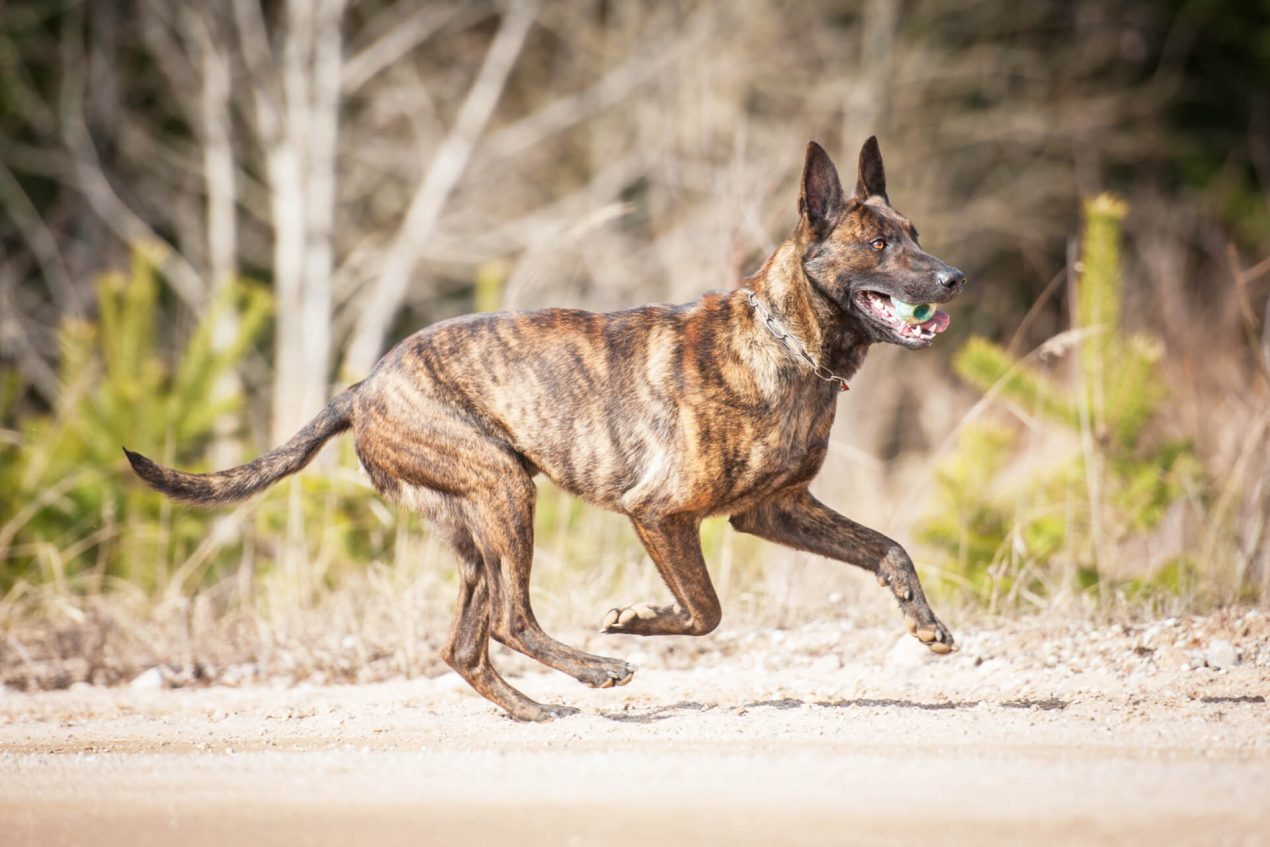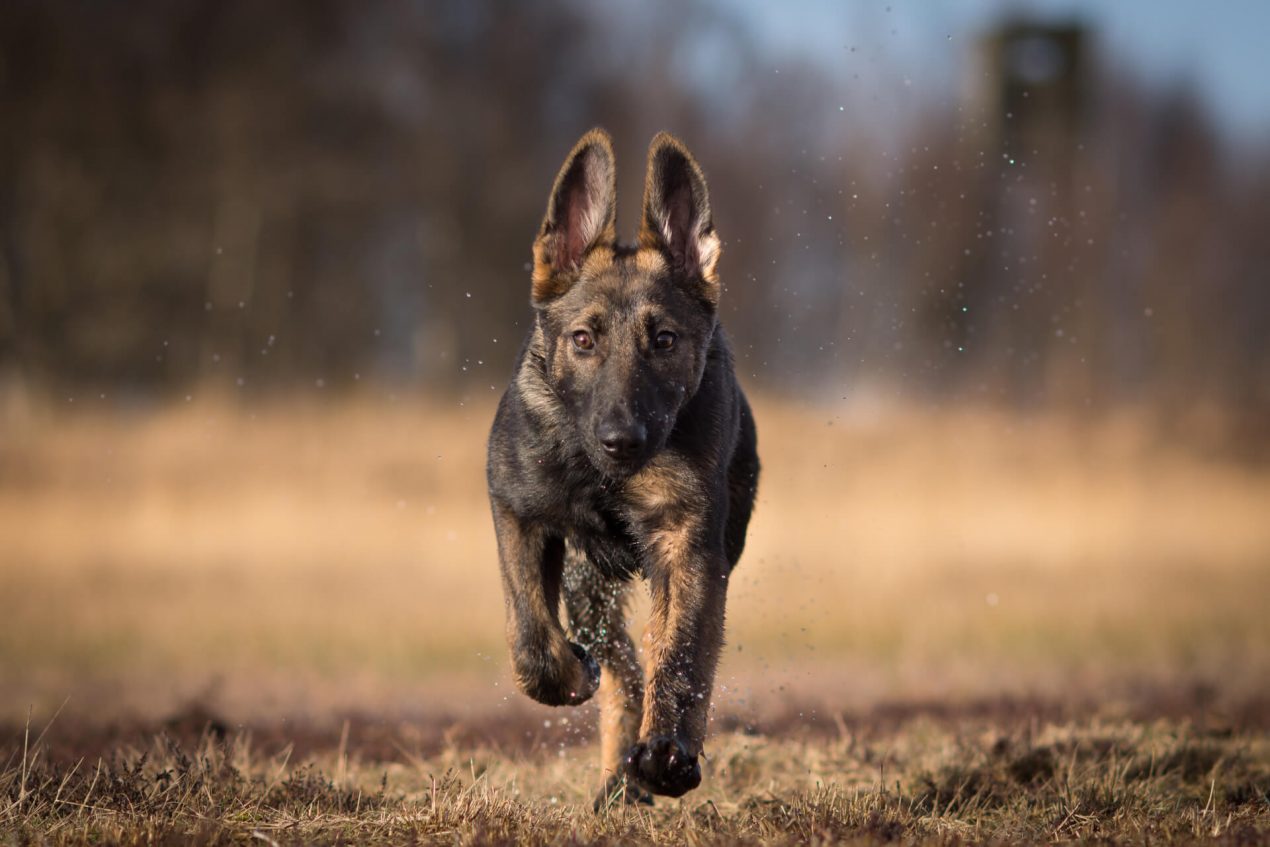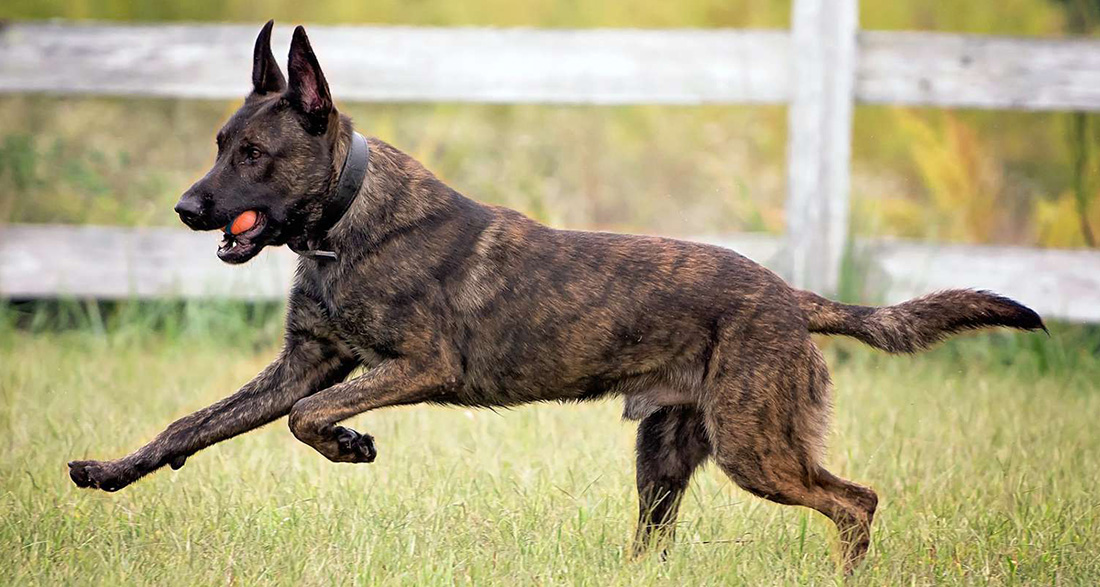The Dutch Shepherd, also known as the “Hollandse Herdershond,” is an affectionate and hardworking dog. In the profile, you’ll find information about the history, temperament, and care of these active dogs.
History of the Dutch Shepherd
The Dutch Shepherd is closely related to the Belgian Shepherd. Both breeds originated from the “Noord-Brabant” region. Their ancestors served as herding and driving dogs for local farmers in the 18th century. They were versatile and also served as watchdogs for homes and farms. The separation of the Netherlands from Belgium in the 19th century led to the division into two breeds:
The Belgian Shepherd in Belgium and the Dutch Shepherd in the Netherlands. Both breeds have remained similar to this day. The Dutch Shepherd was officially recognized by the FCI in 1960, categorized in Group 1 “Herding Dogs and Cattle Dogs,” Section 1 “Sheepdogs.” Due to the decline in large flocks of sheep, they are primarily used today as search, guide, or police dogs.
Breed Overview
GROUP: Herding
HEIGHT: 22.5 to 24.5 inches (males); 21.5 to 23.5 inches (females)
WEIGHT: 45 to 75 pounds
COAT: Short, long, and rough-coated varieties
COAT COLOR: Brindle
LIFE SPAN: 11 to 14 years
TEMPERAMENT: Reliable, affectionate, loyal, alert, obedient, trainable
HYPOALLERGENIC: No
ORIGIN: Netherlands
Temperament and Character
The Dutch Shepherd is a lively and industrious dog. They are active, independent, and loyal and obedient to their family. They tend to bond closely with one person. Dutch Shepherds exhibit strong territorial behavior. They are wary of strangers but don’t unnecessarily show aggression. They are reserved but will intervene if necessary, making them reliable protectors.
However, as former herding dogs, they may tend to make their own decisions. The three externally different varieties of the Herderhond also differ in temperament. Short-haired dogs are considered more spirited and driven than their long- and rough-haired relatives.
| Affection Level | High |
| Friendliness | High |
| Kid-Friendly | High |
| Pet-Friendly | High |
| Exercise Needs | High |
| Playfulness | Medium |
| Energy Level | High |
| Trainability | High |
| Intelligence | High |
| Tendency to Bark | Medium |
| Amount of Shedding | High |
Appearance of the Dutch Shepherd
Breeders of the Dutch Shepherd have never emphasized appearance. The dogs are medium-sized with well-proportioned and muscular bodies. They have wedge-shaped heads with medium-sized ears that stand erect when alert. The tail is slightly curved and hangs straight down. The coat can vary in appearance. Three varieties have developed: short-haired, rough-haired, and long-haired.
All three are brindled with a golden or silver base color and preferably a black mask. Short-haired dogs are the most common, with a hard and not too short coat. Long-haired dogs have straight and long hair, forming a distinct collar around the neck. Rough-haired Herders have a lush undercoat and bushy topcoat.

Training the Puppy
Training a Dutch Shepherd puppy should be clear, structured, and consistent above all. You don’t need to be a professional trainer, but it’s important to establish yourself as a strong leader for the dog. With enough discipline, you can train the eager-to-learn dog to be an obedient companion. However, training should start from day one.
If the puppy develops bad behaviors, they can be challenging to correct in the adult dog. These industrious dogs are sensitive to noises, making professional clicker training or working with a dog whistle effective for training. Socialization through attending a puppy school is essential for the puppy’s development.
Activities with the Dutch Shepherd
The Dutch Shepherd is a versatile dog that thrives on being busy. Today, they are employed as police dogs, search and rescue dogs, or therapy dogs. With the right ambition, training them for service work is advisable. Generally, you can also keep the Herder engaged in active dog sports like agility, which not only focuses on their fitness but also their intelligence.
Obedience training such as dog dancing or obedience is equally suitable for this versatile breed. Moreover, the Herder is a great companion for jogging, cycling, or hiking.

Health and Care
A Dutch Shepherd doesn’t require extensive grooming. Even the long-haired variety is easy to maintain, and regular brushing is sufficient. During shedding season, they may lose more hair temporarily, so they’ll need your support during this time. Daily brushing is therefore recommended. Generally, the Hollandse Herder is a healthy breed. Breeders are vigilant about avoiding hereditary diseases. Due to their robust health, these dogs can live to be 12 years old or more.
Is a Dutch Shepherd Right for Me?
As a prospective owner of a Dutch Shepherd, you should have some experience with dogs. However, even ambitious beginners won’t be overwhelmed by this breed. The most important thing is to have enough time and to engage the dog appropriately. Ideally, a house with a garden where the dog can guard during its free time would be perfect. With consistent training, the Herder can become a great family dog. Additional training as a service dog would be fantastic.

If you’re sure that a Hollandse Herder is right for you, you should start looking for a reputable breeder. Since the breed is very rare, there aren’t many breeders in the United States. It’s best to inquire directly with the “Holländischer Schäferhund Club Deutschland e.V.” The association can provide information about breeders expecting litters.
You won’t find a purebred and healthy puppy for less than $1000. Since the character of the three varieties differs somewhat, you should inquire directly with the breeder. You can also inquire about a dog from animal shelters through the “Hollandse-Herde-in-Not” association.
Interesting and Worth Knowing
With the Dutch Shepherd, there’s a distinction between the FCI-recognized breed and the so-called X-Dutch Shepherds. Breeders of this variety don’t adhere to the official standards. These dogs originate from breeding by the Royal Dutch Police Dog Association (KNPV). For the police, the pure bloodline wasn’t important. They bred their dogs purely for performance and also crossed other breeds like the Malinois. Therefore, X-Herders are often considered mixed breeds.
Do you have a Dutch Shepherd or are you planning to get one? Share with us in the comments what makes them special in your opinion!


